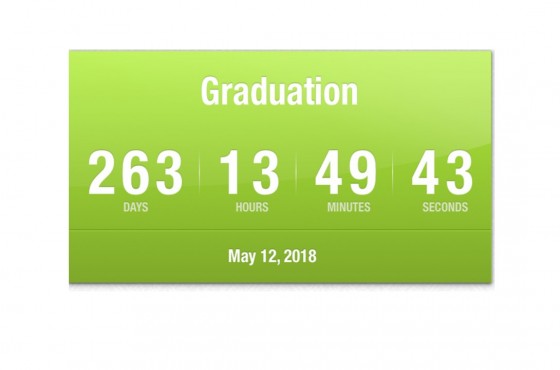Follow the Money Understand how to Leverage the Power of LinkedIn
I know you’re thinking LinkedIn is a social networking site geared toward professionals where they can look for a job, find sales leads or connect with colleagues. That’s what LinkedIn wants you to think and that’s how millions use it, but stop and think for a second. How does the site account for its s almost $4 billion in revenue? Knowing the answer will help you in your job search.
LinkedIn is part of an industry that uses personal data users provide as its product and its real customers are businesses who want to find and check up on professionals.
LinkedIn reports 500 million total users with a long-term goal of 3 billion professionals. That’s 500 million people right now who give the site, owned by Microsoft, a lot of data and not just demographic data such names, employers, schools, locations, but data on skills and keywords (the site ranks these,) how a user searches, companies that are searched and by whom, where the highest concentration of talent is (new product in beta test,) and how people are connected (great way for a hiring manager to check up on a candidate.) That’s a lot of data to mine. And, they are really good at it.
$4billion in revenue, let’s break it down
An overwhelming majority—79% of the people on LinkedIn use its free basic account and the 20% who pay for a premium subscription represent a small fraction of its $4 billion in revenue. Most do not need a paid subscription. You can do a lot of research and connecting with LinkedIn’s free basic account when you know how to use LinkedIn. (More on this later.)
Where does the revenue come from? From selling access to data–the data you provide.
Like most sites, one revenue stream–the white noise of the internet–ad sales. For LinkedIn the real money is made from its Enterprise Licensing or Talent Solutions. This group is LinkedIn’s revenue, growth area and where it puts its resources to develop new products and services. As a job-seeker what you need to know is this: Hiring influencers and decision-makers–recruiters, headhunters, a company’s human resources and others whose job is to find talent–payLinkedIn to search its database of 500 million professionals the way you would do a Google search. Below is how LinkedIn positions Talent Solutions.
“Find the right candidate, faster. Get access to the people you want. Be an organized, strategic partner. Integrate your Applicant Tracking System with Recruiter.”
LinkedIn is a database tool for hiring influencers and decision-makers. This is its reason for being. For you, a job-seeker its reason for being is to get the people who look for talent to find you.
Be findable on LinkedIn
It’s not enough to slap up a profile page. Hiring influencers and decision-makers search LinkedIn’s database the same way you do a Google search and the way company’s use applicant tracking software. Keywords, words in context and other job requirements are added, LinkedIn’s algorithm searches the database and profiles that match appear. (That’s a simplistic overview, but basically how it works.)
Here’s what makes you findable.
- A recent photo and, importantly, one that captures your character and how you want to present yourself to employers.
- A headline that speaks to your value using keywords you would find in the career field you are pursing vs. Student at …
- A summary (your personal brand statement) that tells your story/your value that includes keywords and words in context.
- A work history with enough detail to incorporate keywords that will get picked up in search results, but does not mirror your resume. Â You want people to contact you. Don’t give it all away on LinkedIn.
- A skills section with endorsements and recommendations.
- As a student, you can include papers, honors, courses, your GPA. LinkedIn has sections for these components
Hiring influencers and decision-makers also look for:
- The companies and thought-leaders/influencers you follow.
- The groups you are a member of that are related and relevant to your career interest.
Okay, so now you are finable. That’s just one aspect of leveraging LinkedIn’s power.
The power of groups
As a college student job-seeker, when you know how to use what LinkedIn offers you discover just how big your professional network is and how easy it is to connect with people.
Let’s use University of Michigan. LinkedIn’s algorithm parses through its database to identify everyone who has the school listed on their profile page picking up alumni, professors, administrators and other employees of the school for a total of 268,187+ “alumni” When you go on the University of Michigan page and click on the ‘alumni tab’ you can search the alumni database by geography, industry, company, graduation year and more. You can find alumni in a company you are targeting, in a career field of interest and you can reach out to them. Huge network.
Let’s say you are graduating with an accounting degree and want to start your career at one of top accounting firms. Guess what–there’s a group, “Big Four Accounting Consulting” with 387,599 members. Ask to join. Once a member you can search in the same way you search your school’s page. You can read about the industry from industry people(s) great for interview prep. You can and should add to discussions, perhaps you’ll get noticed. Jobs get posted to the groups. Invaluable resource.
Perhaps you want to work at Johnson & Johnson. Follow the company. Read what it posts. See who in your now large network works there. And, if you have applied for a job at a company, please make sure you are following the company. Trust me, people look.
Want to stay current on an issue, follow thought-leaders. You’ll be prepared for interviews and when in the post-interview follow up stage of the hiring process, you’ll likely find an article you can send to the person(s) you interviewed with that shows you are on top of things.
That’s leveraging the power of LinkedIn.



